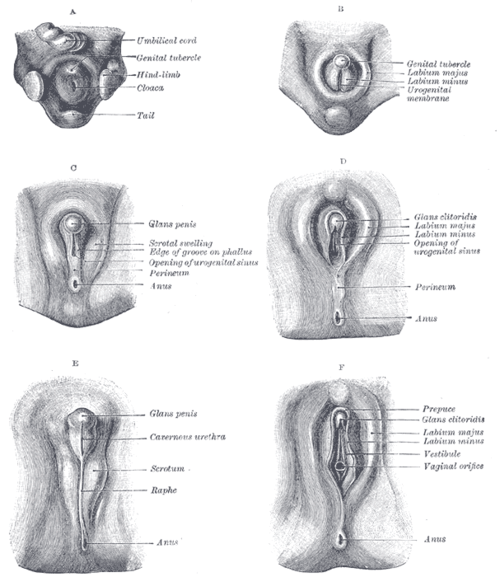Genital tubercle
| Genital tubercle | |
|---|---|
 Stages in the development of the external sexual organs in the male and female. | |
| Details | |
| Precursor | somatopleure[1] |
| Gives rise to | genital swelling, mons pubis, clitoris, penis |
| Identifiers | |
| Latin | tuberculum phallicum; tuberculum genitale |
| Code | TE E5.7.4.0.1.0.1 |
A genital tubercle or phallic tubercle is a body of tissue present in the development of the reproductive system. It forms in the ventral, caudal region of mammalian embryos of both sexes, and eventually develops into a primordial phallus. In the human fetus, the genital tubercle develops around week 4 of gestation, and by week 9 becomes recognizably either a clitoris or penis. This should not be confused with the sinus tubercle which is a proliferation of endoderm induced by paramesonephric ducts. Even after the phallus is developed, the term genital tubercle remains, but only as the terminal end of it,[2] which develops into either the glans penis or the glans clitoridis.
The genital tubercle is sensitive to dihydrotestosterone and rich in 5-alpha-reductase, so that the amount of fetal testosterone present after the second month is a major determinant of phallus size at birth.
See also
References
- ↑ Netter, Frank H.; Cochard, Larry R. (2002). Netter's Atlas of human embryology. Teterboro, N.J: Icon Learning Systems. p. 159. ISBN 0-914168-99-1.
- ↑ The University of North Carolina at Chapel Hill - Embryo images nr 024
External links
- Swiss embryology (from UL, UB, and UF) ugenital/genitexterne01
- Overview at mcgill.ca